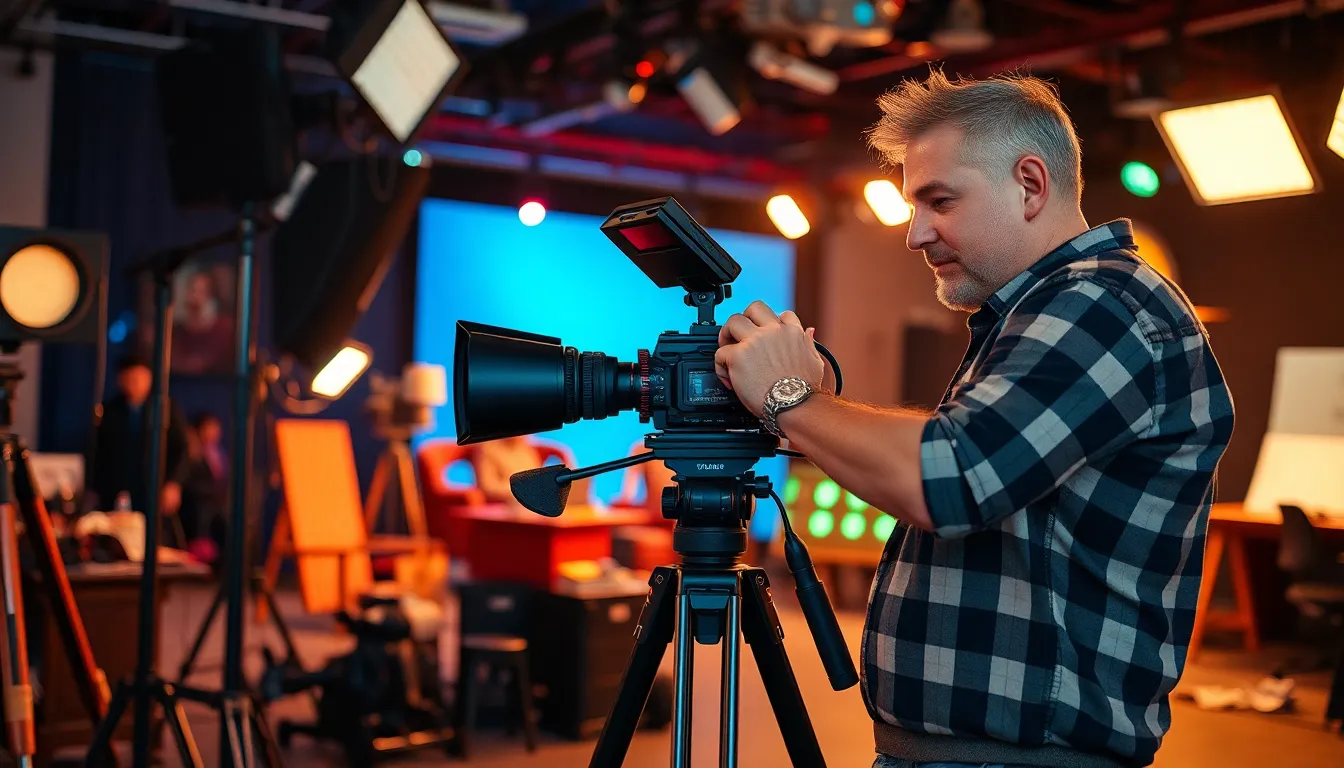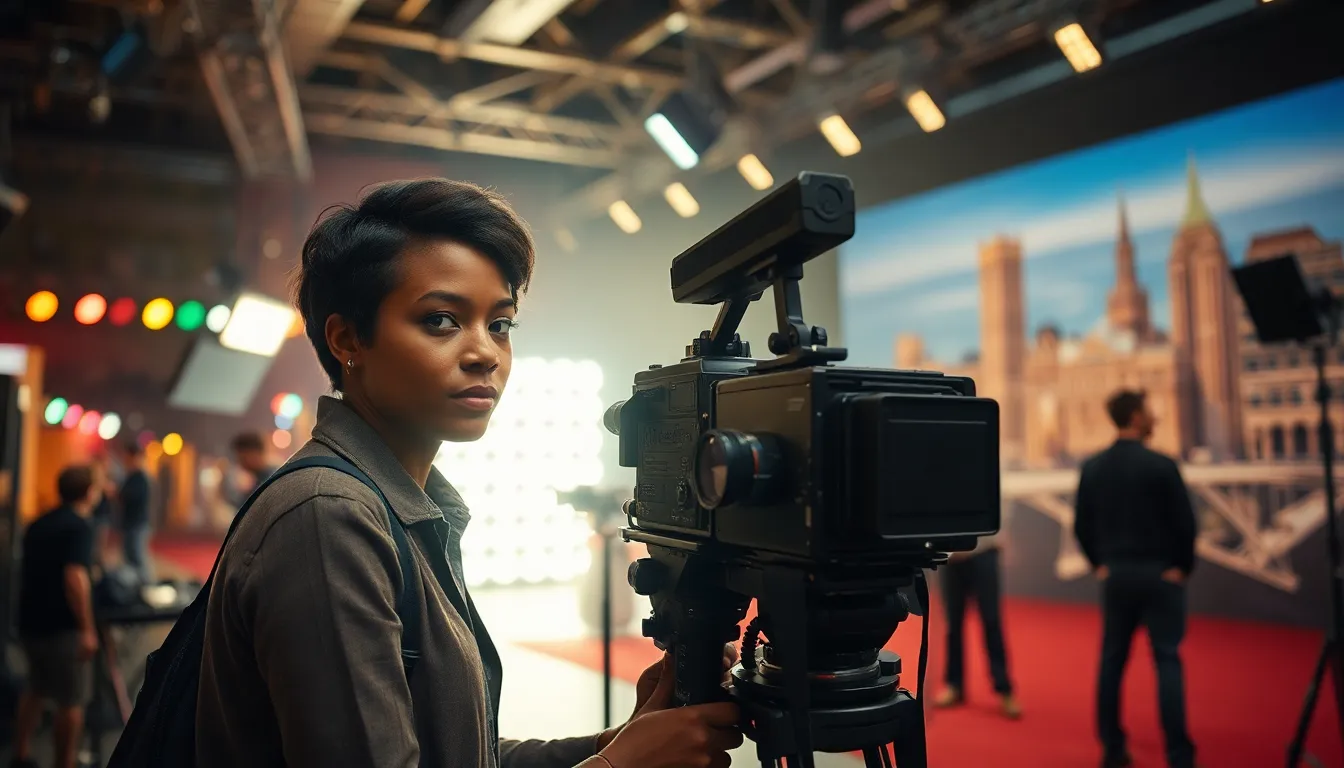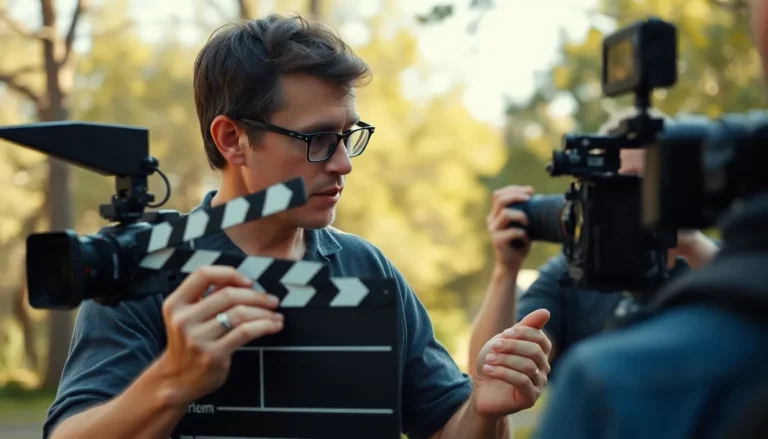Lights, camera, action! Ever wondered how filmmakers create those jaw-dropping moments that leave audiences on the edge of their seats? Cinematic techniques are the secret sauce behind every epic scene, transforming mere stories into unforgettable experiences. From the dramatic use of lighting to the clever framing of shots, these techniques can make even the most mundane moments feel like a blockbuster.
Table of Contents
ToggleOverview of Cinematic Techniques
Cinematic techniques encompass various elements that filmmakers employ to enhance storytelling. Lighting impacts the mood, creating atmosphere and influencing audience emotion. Different shot types, including wide shots and close-ups, serve unique purposes in conveying narrative and character development.
Camera movement, such as pans or dollies, adds dynamism to scenes and guides viewer attention. Editing techniques, especially cuts and transitions, dictate the rhythm of a film and shape the viewing experience. Sound design, including score and sound effects, enriches storytelling and deepens immersion.
Composition plays a crucial role in visual storytelling. By framing subjects thoughtfully within the shot, filmmakers create focus and meaning. Color schemes enhance visuals, evoking specific feelings or themes throughout the film.
Visual effects can amplify the fantastical elements of a film, making extraordinary moments more believable. Directors use these techniques to create tension or evoke empathy, which strengthens audience connections to characters.
Incorporating symbolism into scenes adds layers of meaning. Subtle imagery resonates with viewers, prompting deeper reflection on the narrative. These various techniques work synergistically, crafting a compelling cinematic experience that captivates audiences.
Types of Cinematic Techniques

Cinematic techniques encompass various elements that filmmakers employ to enhance storytelling. Each technique contributes to the overall narrative, elevating the audience’s experience.
Camera Angles and Shots
Camera angles and shots play a critical role in shaping a film’s perspective. Wide shots establish context and setting, while medium shots focus on character interactions. Close-ups capture emotions, revealing subtle expressions. Over-the-shoulder shots provide intimacy in conversations, making viewers feel part of the scene. Aerial shots offer sweeping views, showcasing landscapes or dramatic action. Filmmakers select specific angles to emphasize points of view or heighten tension. The combination of these shots creates a dynamic visual narrative that draws in the audience.
Lighting and Color
Lighting and color significantly impact the mood of a film. High-key lighting promotes a bright, cheerful atmosphere, often used in comedies or romances. Conversely, low-key lighting adds drama or suspense, perfect for thrillers or horror genres. Color choices evoke emotions; warm colors like reds and yellows can generate feelings of excitement, while cool colors like blues suggest calmness or sadness. Color saturation also conveys mood shifts. Natural lighting conveys realism, while artificial lighting can create stylized effects. By manipulating these elements, filmmakers guide audience emotions and interpretations.
Editing Techniques
Editing techniques are essential for pacing and storytelling clarity. Cuts and transitions shape the flow of scenes, ensuring smooth narrative progression. Fast cuts build excitement during action sequences, whereas slow cuts allow for reflection. Cross-cutting showcases parallel actions, enhancing tension and drama. Fade-ins and fade-outs signal shifts in time or mood, marking crucial storytelling moments. Continuity editing maintains the illusion of time and space, keeping viewers immersed. The thoughtful application of editing techniques weaves together the film’s narrative threads, creating a cohesive viewing experience.
Impact of Cinematic Techniques
Cinematic techniques significantly influence storytelling and audience engagement. Filmmakers harness these tools to craft memorable narratives.
Storytelling Enhancement
Cinematic techniques enhance storytelling by deepening emotional connections. Shot types like close-ups effectively capture characters’ expressions, providing insight into their internal struggles. Lighting shapes moods; for instance, low-key lighting creates tension, while high-key lighting conveys happiness. Sound design further enriches narratives, adding layers of immersion that draw viewers into the story. Editing techniques, such as montage, establish time lapses, emphasizing character development or thematic explorations. Color palettes also play an essential role; for example, warm colors evoke intimacy, whereas cool tones can suggest isolation. Together, these elements weave intricate narratives that resonate strongly with audiences.
Viewer Engagement
Engaging viewers is a primary goal of effective cinematic techniques. Varied camera angles, such as bird’s-eye views, create unique perspectives, enhancing visual interest. Dynamic camera movements, including tracking shots, immerse audiences, making them feel part of the action. Pacing, shaped by editing choices like jump cuts, maintains momentum and keeps viewers invested. Thoughtful use of silence alongside sound amplifies emotional moments, drawing attention to significant plot points. Symbolism infuses layers of meaning, prompting reflection that captivates the audience. Overall, these techniques work in unison to foster lasting engagement and emotional impact.
Notable Examples in Film History
Film history showcases numerous groundbreaking cinematic techniques that enhanced storytelling. “Citizen Kane” (1941) exemplifies deep focus cinematography, allowing simultaneous sharpness of foreground and background, enriching narrative complexity. Alfred Hitchcock popularized the use of the “dolly zoom” in “Vertigo” (1958), creating disorientation and emotional tension that resonated with audiences.
“Star Wars” (1977) revolutionized visual effects, employing groundbreaking technology to create immersive worlds and epic battles. Walter Murch’s editing techniques in “Apocalypse Now” (1979) showcased the power of sound design, blending visuals and audio to heighten dramatic impact.
Additionally, “Psycho” (1960) features innovative editing, particularly during the notorious shower scene, using rapid cuts to evoke fear without graphic violence. Tim Burton’s use of color in “Edward Scissorhands” (1990) contrasts starkly between the vibrant, fantastical world and the mundane suburban setting, amplifying themes of isolation and acceptance.
“Gravity” (2013) stands as a prime example of innovative camera work and sound design. The film’s long takes and lack of a traditional score immerse viewers in a feeling of weightlessness, enhancing the emotional experience. The unique use of lighting in “Blade Runner” (1982) builds a dystopian atmosphere, utilizing neon glows against darkness to evoke feelings of alienation.
These examples represent pivotal moments in film history where cinematic techniques transformed storytelling. Each film’s distinct approach serves as a milestone, influencing countless filmmakers and shaping audience perceptions.
Cinematic techniques are essential tools that filmmakers wield to craft compelling narratives and evoke powerful emotions. By skillfully manipulating elements like lighting, shot composition, and sound design, they create immersive experiences that resonate deeply with audiences. Each technique serves a unique purpose, enhancing storytelling and fostering emotional connections.
As the film industry continues to evolve, these techniques will likely adapt and innovate, pushing the boundaries of visual storytelling. Understanding these methods not only enriches the viewing experience but also inspires aspiring filmmakers to explore their creative potential. The art of cinema remains a dynamic interplay of technique and imagination, ensuring that audiences remain captivated for generations to come.




